Making Diamond Connections
As we enter the all-important fourth quarter and holiday selling season, diamonds will hopefully be top of everyone’s mind and shopping list.
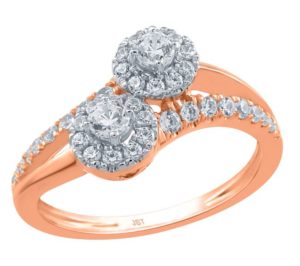 The launch of the first generic diamond advertising in more than five years, “Real is Rare” by the Diamond Producers Association (DPA) will hit cyberspace with messaging designed to strengthen the relationship millennials have with diamonds. While national advertising by the retail giant, Signet for the two-stone ring and its collection will further the story of us in symbolic diamond jewelry. Vendor-retailer partnerships are key to success. Jewelers who are strong in the market today are working with vendors who help them buy smart and sell through with effective programs that tell stories and set them apart from the competition.
The launch of the first generic diamond advertising in more than five years, “Real is Rare” by the Diamond Producers Association (DPA) will hit cyberspace with messaging designed to strengthen the relationship millennials have with diamonds. While national advertising by the retail giant, Signet for the two-stone ring and its collection will further the story of us in symbolic diamond jewelry. Vendor-retailer partnerships are key to success. Jewelers who are strong in the market today are working with vendors who help them buy smart and sell through with effective programs that tell stories and set them apart from the competition.
Manufacturers cite two-stone, fancy cuts, composite settings, and stackable bands top trends in diamond jewelry for the holidays. These trends, they say, speak to consumers’ desire for personalization, meaning, and bang-for-the-buck.
Cultural Imperative
There’s a lot of buzz about the new generic diamond campaign by the DPA, a coalition of seven major diamond producers that represent 75 percent of the world diamond production. It’s “Real is Rare” marketing platform, to launch late September, is a result of six months of research by The Sound.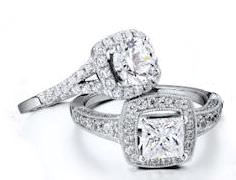
Created by agency partner Mother New York, the campaign speaks to millennials’ desire for genuine relationships that are hard to find in a world of virtual and superficial interactions, and positions diamonds as the ideal symbol of what is rare and precious. Millennials will be targeted on digital platforms where they already consume media. The initial media plan, with a $12 million spend, will run ads through November before the media scene fills up in December.
The group is developing a trade section on its website, cites Michael Pace, interim managing director. He says there will be no trademarked collateral for manufacturers and retailers to use this quarter, but encourages they incorporate the ideas of authenticity, trust and transparency into their presentations. He says the platform will take time and a collaborative effort to develop.
Many diamond manufacturers believe diamonds ceased to be a cultural imperative when the industry dropped generic diamond advertising. “This is a wake-up call,” says Corinna Bhasin, general manager, F.D. Worldwide Merchandise Group, New York, who hails it long overdue and much needed. “We need more promotions and we must work together to target consumers.”
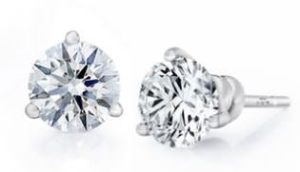 Concurs Rebecca Foerster, executive vice president of strategic planning and marketing, Leo Schachter Diamonds, New York. “As manufacturers, we must help bring relevance back to diamonds that has been lost to other products and categories. Manufactures who think this way will lead retailers to the next level.”
Concurs Rebecca Foerster, executive vice president of strategic planning and marketing, Leo Schachter Diamonds, New York. “As manufacturers, we must help bring relevance back to diamonds that has been lost to other products and categories. Manufactures who think this way will lead retailers to the next level.”
Joseph Green, Leo Schachter’s executive vice president of sales, says the challenge is to differentiate presentation. “Retailers go to market with the same diamond certificates, qualities, and sizes. The goal is to present your inventory in a way that’s attractive to your customers.” That’s the concept behind the brand’s four turnkey programs with benefits like unique diamond certificates, customized display and advertising, sales incentives, loyalty program, and virtual inventory.
Despite the challenges the Internet presents, Jay Gerber for WR Cobb, East Providence, Rhode Island says jewelers without a strong online presence and virtual inventory capabilities will not succeed. “Whether a consumer ends up buying online or not, just to know they can’t is a problem. Millennials are buying diamonds; jewelers just need to revise the business model.”
Gerber advises jewelers incorporate technology in the way consumers are using it, noting that his company offers an engaging ecommerce platform with assets like 3D images and loupe magnification. Companies that have a strong virtual inventory component can provide vital data to help jewelers create digital platforms that work for them.
Millennial Mindset
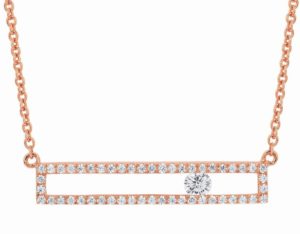 Millennials like diamonds, research shows. But the way the industry talks to them about diamonds needs to change to be more relevant to their lifestyle.
Millennials like diamonds, research shows. But the way the industry talks to them about diamonds needs to change to be more relevant to their lifestyle.
Millennials are in search of real moments of connection in today’s hyper-connected virtual world. We must help consumers identify these moments and give them permission to celebrate them with diamonds as the perfect symbol.
Millennials see a diamond as special for its rarity, beauty and value but look at the ritual of giving one as formal and dictated by others’ expectations. We must reconnect millennials with diamonds at an emotional level by focusing on their authenticity as a reflection of the authenticity within a relationship.
Millennials are reluctant to accept anything that’s prescribed and want to understand the story behind the product, and preferably influence it. Personalization of designs, co-creation, and finding ways to relate the diamond to a personal reason for gifting rather than a marketed one are critical.
Millennials are optimistic, adventurous and adaptable, having weathered economic adversities. What they want to celebrate is not so much milestones, but their ability to move their relationship forward in meaningful ways. Helping them frame achievements with concepts that celebrate personal growth is key.
Digital Assets
The biggest component needed for the success of this or any messaging, is to engage millennials where they already are, online and on their digital devices.
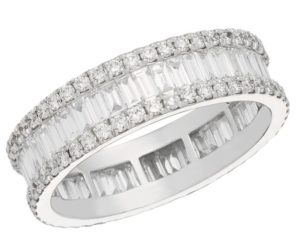 Maren Pfister, merchandise manager, Ostbye, Minneapolis, Minnesota, advocates retailers post images and videos daily, and engage customers using a call to action and leverage on social reviews. She says emailing and texting coupons works well since millennials are always on their phone.
Maren Pfister, merchandise manager, Ostbye, Minneapolis, Minnesota, advocates retailers post images and videos daily, and engage customers using a call to action and leverage on social reviews. She says emailing and texting coupons works well since millennials are always on their phone.
In fact, videos do better than traditional advertising, touts Phyllis Bergman, CEO of Mercury Rings, a division of Interjewel Group, New York, with YouTube an important platform for storytelling, “Today, it’s all about authenticity and videos relay stories in a way that’s real for millennials.”
Foerster encourages jewelers to tap into the Diamond Empowerment Fund and diamondsdogood.com to help promote the rich story of diamonds. “The amount of hands that touch a diamond before it gets to the consumer, and all the good it does along the way, bring it to life as more than an object.”
Diamond Trends
Many manufacturers hail fancy cut diamonds the trend to watch. “What’s nice about fancy shapes is that you can offer a traditional look with a unique center in a fancy shape,” hails Alok Mehta, CEO of IDD, New York. “Ovals and cushions are among our bestsellers, with interest for emerald cuts rising.” Others also cite princess cuts and pears, and to some extent marquises.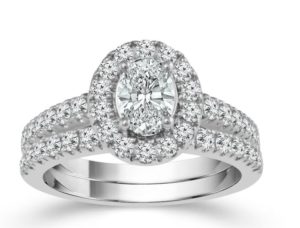
Composite settings, Mehta adds, are a major trend in engagement rings. Setting smaller stones to look like one big diamond is a popular bang-for-the-buck style for millennials, many with less to spend than their parents because of staggering college loan debt and competitive job market. A big feature in IDD’s Fairy Tale Diamonds brand is its patented Forever Lock™ setting technology.
Moreover, the two-stone trend continues its reign for the 2016 holidays, with rings bestsellers, and pendants and earrings gaining traction. Mehta says the concept easily embraces different storylines and relationships.
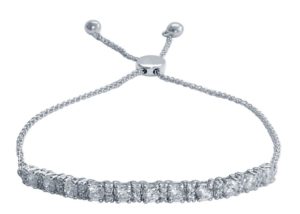 Diamond bands are huge, too, says Bergman. “Millennials don’t want something different, just unique to them. You can tell a story with bands. Changing bands offers a unique way of wearing your jewelry. There are so many different relationships. Bands are also multi generational. Bands enable people to do great things without a big spend.”
Diamond bands are huge, too, says Bergman. “Millennials don’t want something different, just unique to them. You can tell a story with bands. Changing bands offers a unique way of wearing your jewelry. There are so many different relationships. Bands are also multi generational. Bands enable people to do great things without a big spend.”
Trending in diamond fashion jewelry is layering pieces like necklaces, and studs with earring jackets. “Diamond bolo bracelets are popular, too,” says Nick Parekh, president of Laxmi Diamond, New York. “It’s a new lariat-style introduced last year that has continued to gain momentum.”







